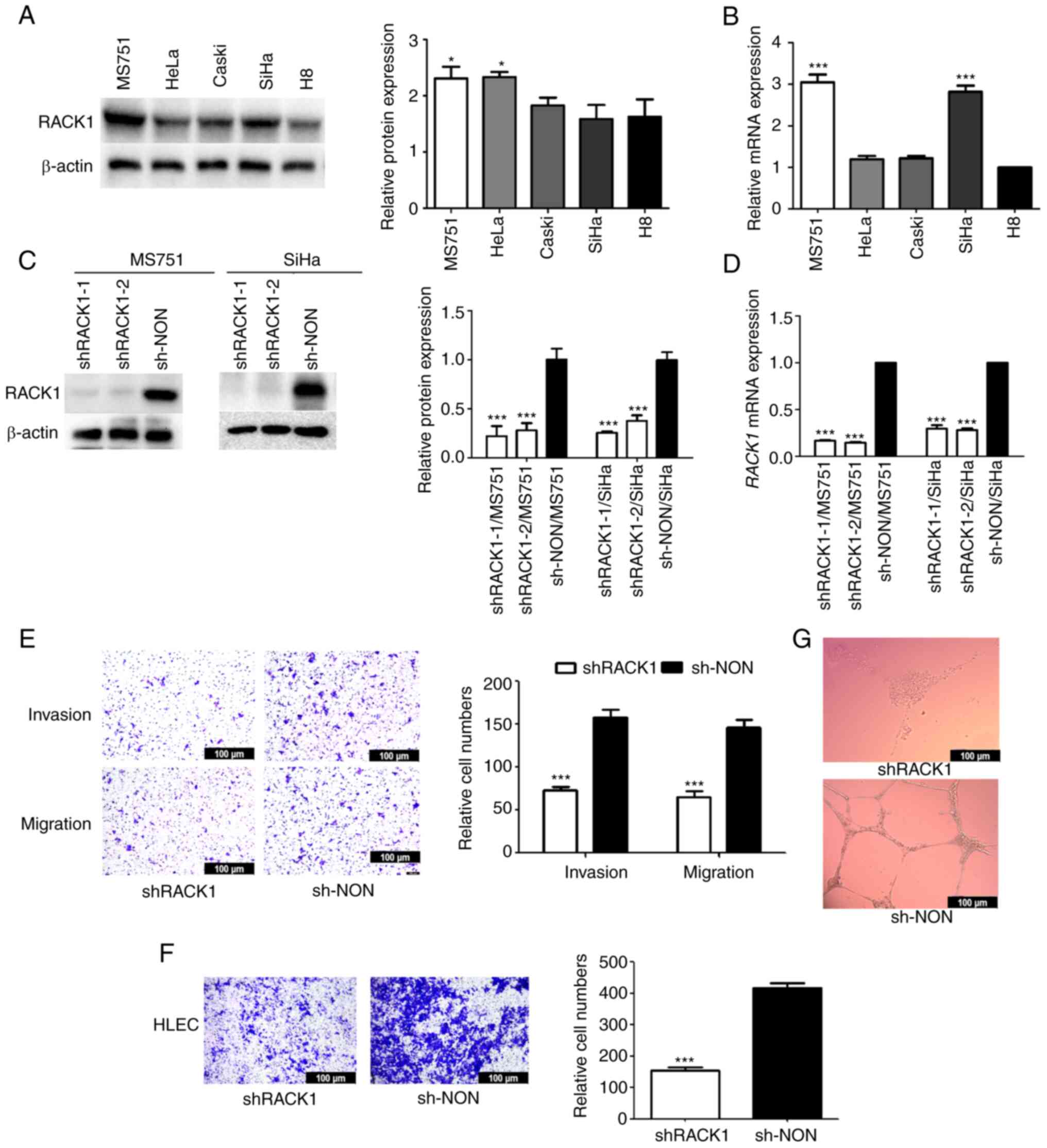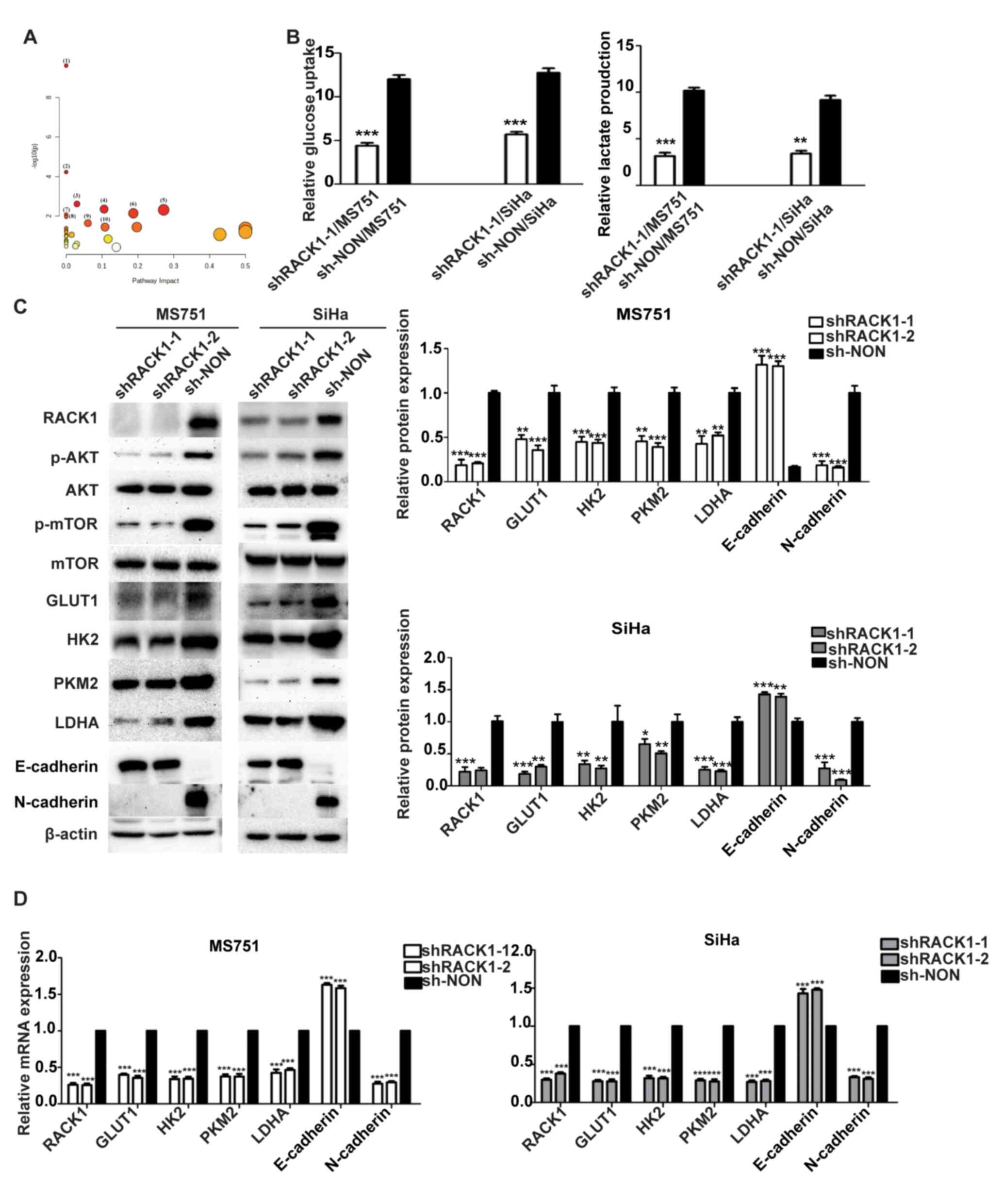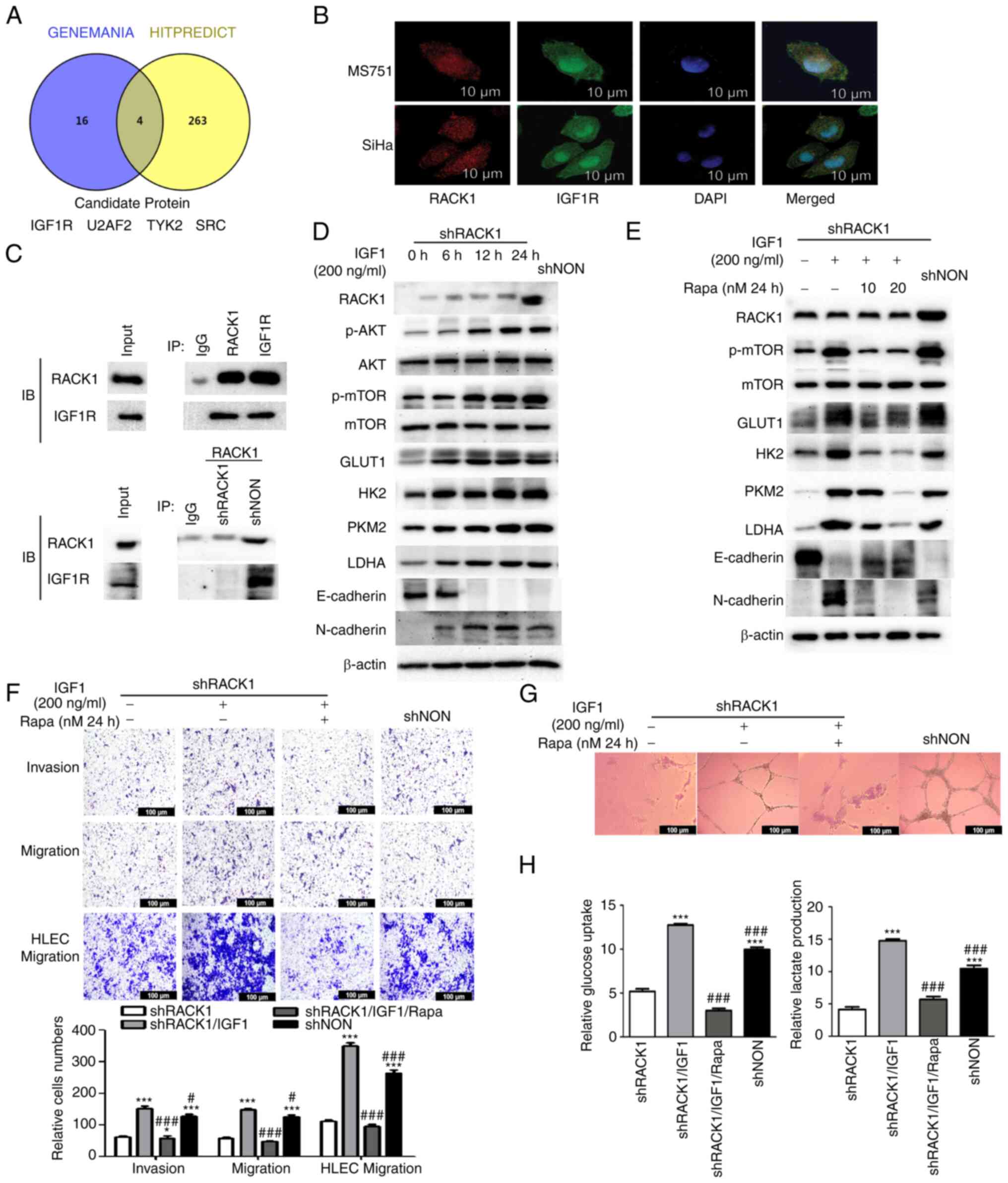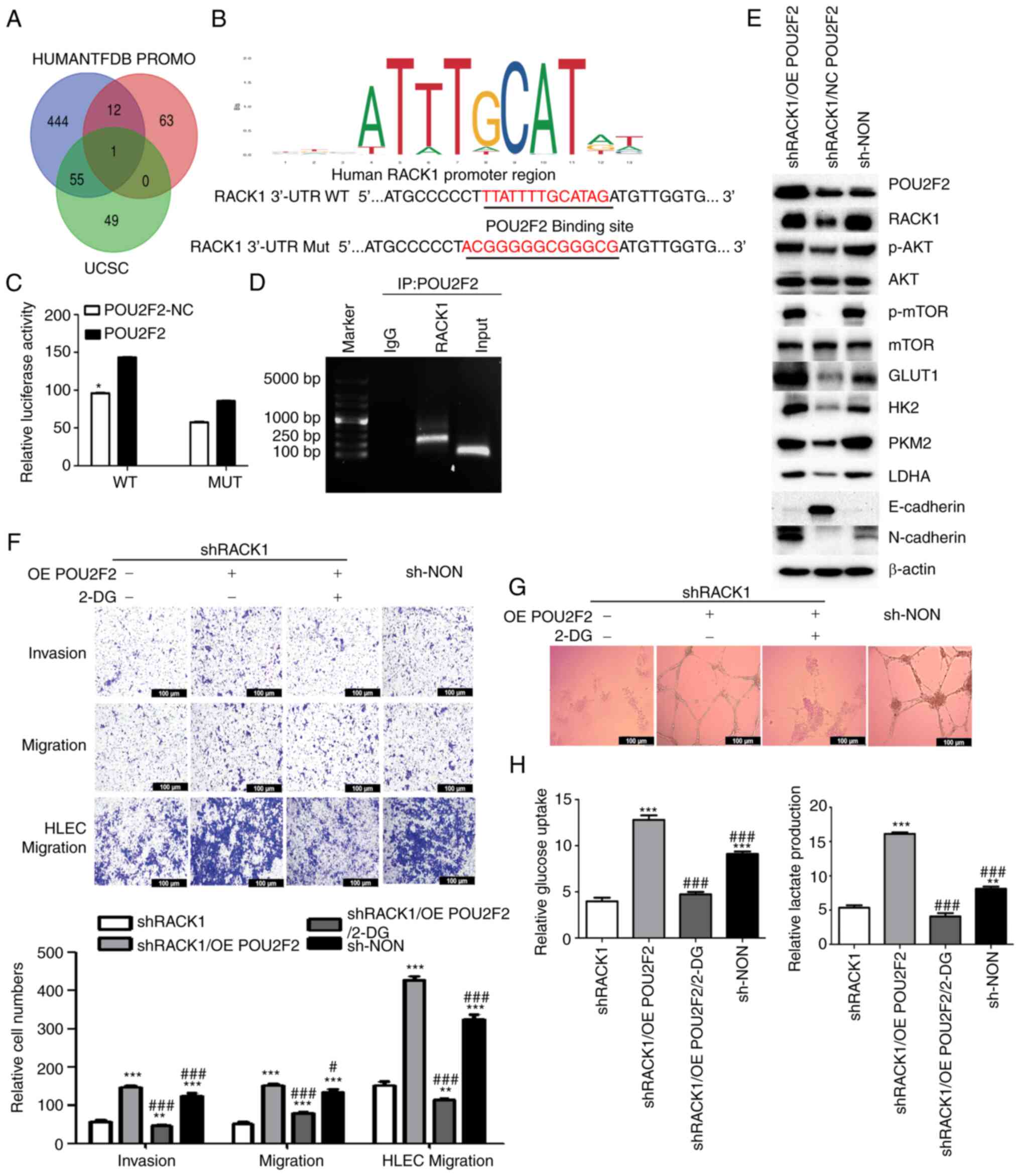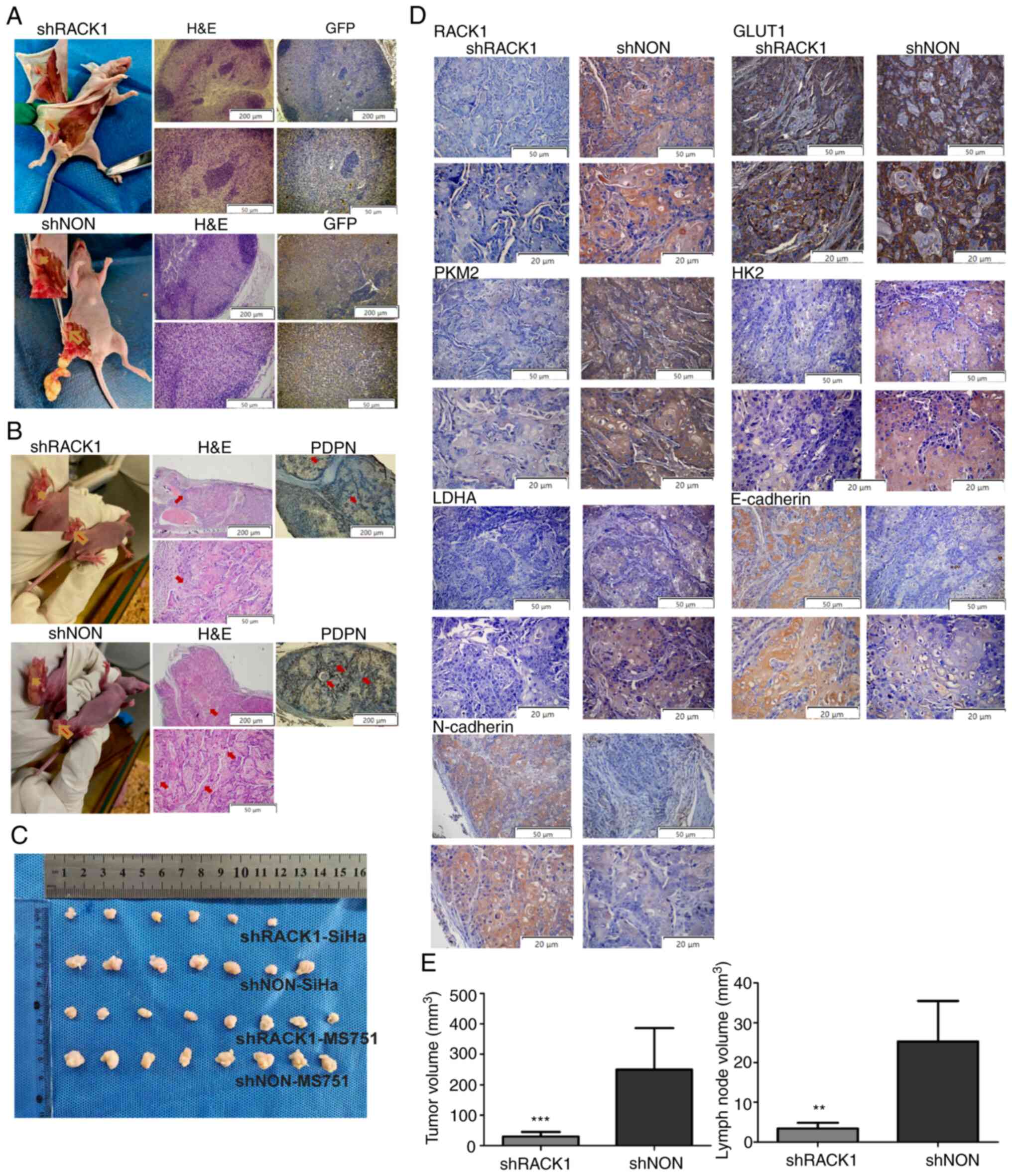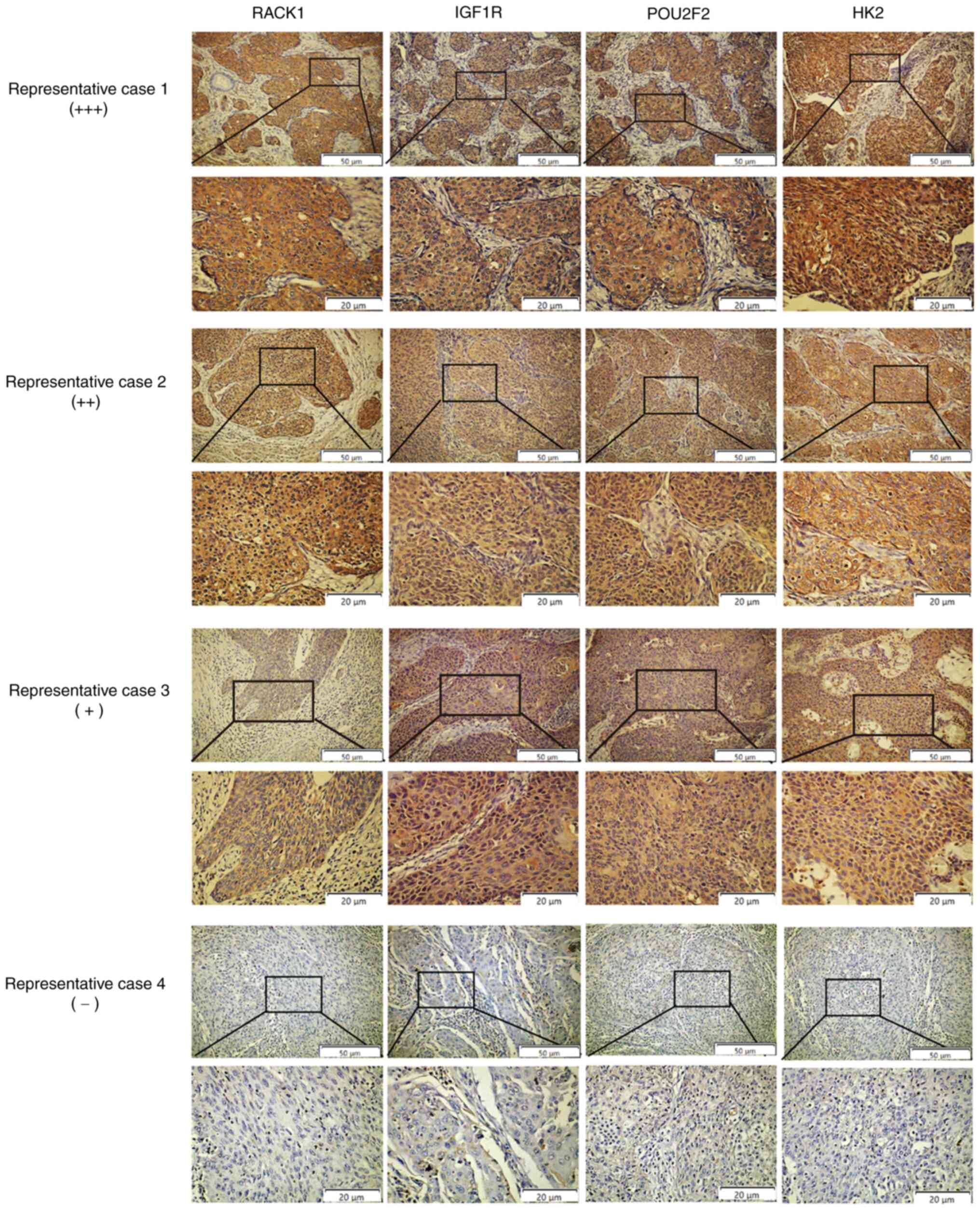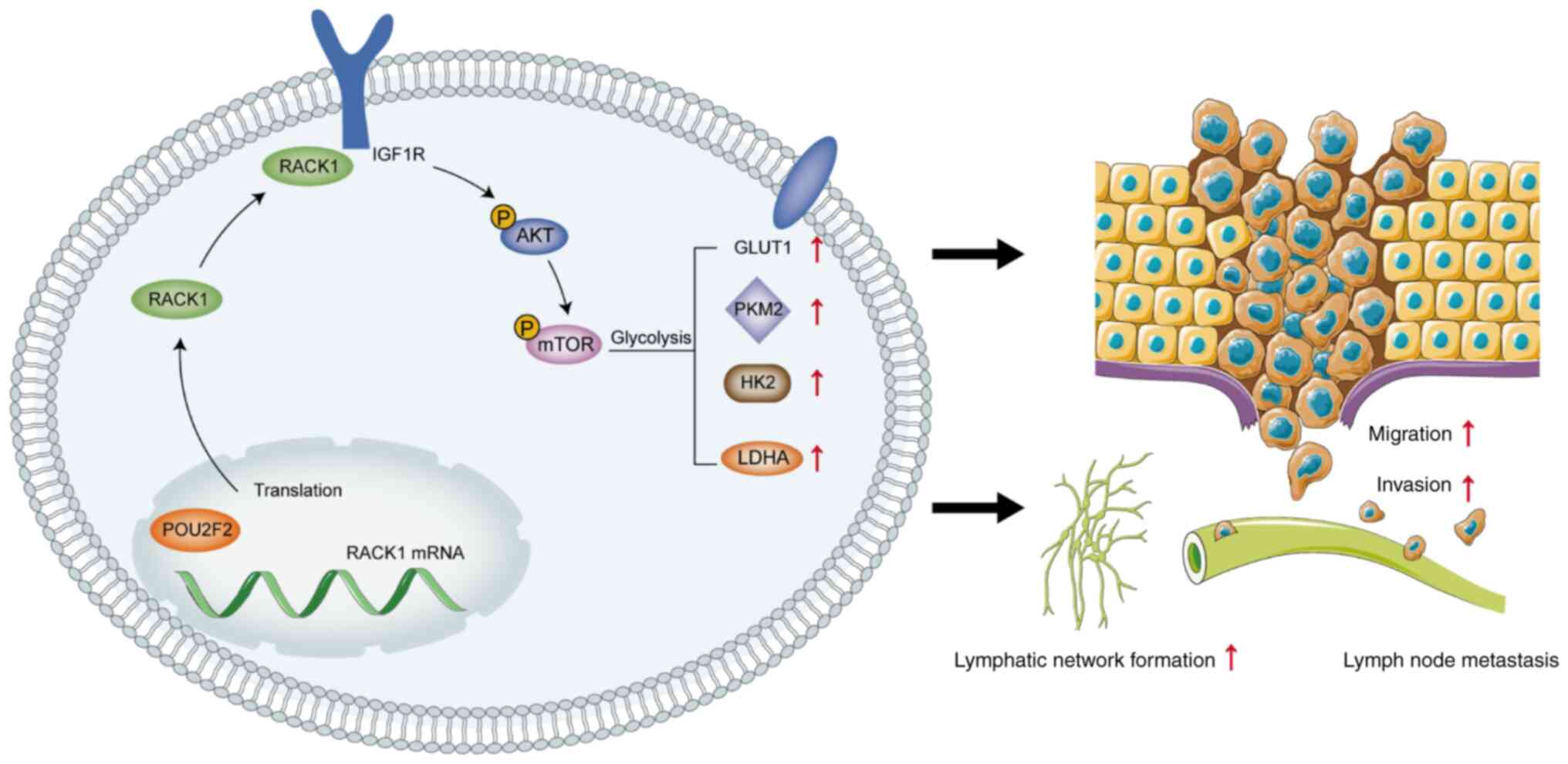|
1
|
Kagabu M, Yoshino N, Saito T, Miura Y,
Takeshita R, Murakami K, Kawamura H, Baba T and Sugiyama T: The
efficacy of a third-generation oncolytic herpes simplex viral
therapy for an HPV-related uterine cervical cancer model. Int J
Clin Oncol. 26:591–597. 2021. View Article : Google Scholar
|
|
2
|
Husaiyin S, Jiao Z, Yimamu K, Maisaidi R,
Han L and Niyazi M: Thinprep cytology combined with hpv detection
in the diagnosis of cervical lesions in 1622 patients. PLoS One.
16:e02609152021. View Article : Google Scholar
|
|
3
|
Yang H, Kuo YH, Smith ZI and Spangler J:
Targeting cancer metastasis with antibody therapeutics. Wiley
Interdiscip Rev Nanomed Nanobiotechnol. 13. pp. e16982021,
View Article : Google Scholar
|
|
4
|
Federico C, Sun J, Muz B, Alhallak K,
Cosper PF, Muhammad N, Jeske A, Hinger A, Markovina S, Grigsby P,
et al: Localized delivery of cisplatin to cervical cancer improves
its therapeutic efficacy and minimizes its side effect profile. Int
J Radiat Oncol Biol Phys. 109:1483–1494. 2021. View Article : Google Scholar
|
|
5
|
Swartz MA and Lund AW: Lymphatic and
interstitial flow in the tumour microenvironment: Linking
mechanobiology with immunity. Nat Rev Cancer. 12:210–219. 2012.
View Article : Google Scholar
|
|
6
|
Fagiani E, Lorentz P, Bill R, Pavotbawan
K, Kopfstein L and Christofori G: Vegf receptor-2-specific
signaling mediated by vegf-e induces hemangioma-like lesions in
normal and in malignant tissue. Angiogenesis. 19:339–358. 2016.
View Article : Google Scholar
|
|
7
|
Liu D, Zeinolabediny Y, Caccuri F, Ferris
G, Fang WH, Weston R, Krupinski J, Colombo L, Salmona M, Corpas R,
et al: P17 from hiv induces brain endothelial cell angiogenesis
through egfr-1-mediated cell signalling activation. Lab Invest.
99:180–190. 2019. View Article : Google Scholar
|
|
8
|
Park MK, Zhang L, Min KW, Cho JH, Yeh CC,
Moon H, Hormaechea-Agulla D, Mun H, Ko S, Lee JW, et al: Neat1 is
essential for metabolic changes that promote breast cancer growth
and metastasis. Cell Metab. 33:2380–2397. 2021. View Article : Google Scholar
|
|
9
|
Vaupel P, Schmidberger H and Mayer A: The
warburg effect: Essential part of metabolic reprogramming and
central contributor to cancer progression. Int J Radiat Biol.
95:912–919. 2019. View Article : Google Scholar
|
|
10
|
Luo P, Zhang C, Liao F, Chen L, Liu Z,
Long L, Jiang Z, Wang Y, Wang Z, Liu Z, et al: Transcriptional
positive cofactor 4 promotes breast cancer proliferation and
metastasis through c-myc mediated warburg effect. Cell Commun
Signal. 17:362019. View Article : Google Scholar
|
|
11
|
Yang J, Ren B, Yang G, Wang H, Chen G, You
L, Zhang T and Zhao Y: The enhancement of glycolysis regulates
pancreatic cancer metastasis. Cell Mol Life Sci. 77:305–321. 2020.
View Article : Google Scholar
|
|
12
|
Hasim A, Ali M, Mamtimin B, Ma JQ, Li QZ
and Abudula A: Metabonomic signature analysis of cervical carcinoma
and precancerous lesions in women by (1)H NMR spectroscopy. Exp
Ther Med. 3:945–951. 2012. View Article : Google Scholar
|
|
13
|
Wu J, Meng J, Du Y, Huang Y, Jin Y, Zhang
J, Wang B, Zhang Y, Sun M and Tang J: Rack1 promotes the
proliferation, migration and invasion capacity of mouse
hepatocellular carcinoma cell line in vitro probably by pi3k/rac1
signaling pathway. Biomed Pharmacother. 67:313–319. 2013.
View Article : Google Scholar
|
|
14
|
Wu H, Song S, Yan A, Guo X, Chang L, Xu L,
Hu L, Kuang M, Liu B, He D, et al: Rack1 promotes the invasive
activities and lymph node metastasis of cervical cancer via
galectin-1. Cancer Lett. 469:287–300. 2020. View Article : Google Scholar
|
|
15
|
Tokunaga H, Shimada M, Ishikawa M and
Yaegashi N: TNM classification of gynaecological malignant tumours,
eighth edition: Changes between the seventh and eighth editions.
Jpn J Clin Oncol. 49:311–320. 2019. View Article : Google Scholar
|
|
16
|
Livak KJ and Schmittgen TD: Analysis of
relative gene expression data using real-time quantitative PCR and
the 2(-Delta Delta C(T)) method. Methods. 25:402–408. 2001.
View Article : Google Scholar
|
|
17
|
Liu D, Li C, Trojanowicz B, Li X, Shi D,
Zhan C, Wang Z and Chen L: Cd97 promotion of gastric carcinoma
lymphatic metastasis is exosome dependent. Gastric Cancer.
19:754–766. 2016. View Article : Google Scholar
|
|
18
|
Cui B, Chen J, Luo M, Liu YY, Chen HL, Lü
D, Wang LW, Kang YZ, Feng Y, Huang LB and Zhang P: PKD3 promotes
metastasis and growth of oral squamous cell carcinoma through
positive feedback regulation with PD-L1 and activation of
ERK-STAT1/3-EMT signalling. Int J Oral Sci. 13:82021. View Article : Google Scholar
|
|
19
|
Bower AJ, Li J, Chaney EJ, Marjanovic M,
Spillman DR Jr and Boppart SA: High-speed imaging of transient
metabolic dynamics using two-photon fluorescence lifetime imaging
microscopy. Optica. 5:1290–1296. 2018. View Article : Google Scholar
|
|
20
|
Li HM, Yang JG, Liu ZJ, Wang WM, Yu ZL,
Ren JG, Chen G, Zhang W and Jia J: Blockage of glycolysis by
targeting pfkfb3 suppresses tumor growth and metastasis in head and
neck squamous cell carcinoma. J Exp Clin Cancer Res. 36:72017.
View Article : Google Scholar
|
|
21
|
Wan J, Liu Y, Long F, Tian J and Zhang C:
Circpvt1 promotes osteosarcoma glycolysis and metastasis by
sponging mir-423-5p to activate wnt5a/ror2 signaling. Cancer Sci.
112:1707–1722. 2021. View Article : Google Scholar
|
|
22
|
Lenz G, Hamilton A, Geng S, Hong T, Kalkum
M, Momand J, Kane SE and Huss JM: T-darpp activates igf-1r
signaling to regulate glucose metabolism in trastuzumab-resistant
breast cancer cells. Clin Cancer Res. 24:1216–1226. 2018.
View Article : Google Scholar
|
|
23
|
Hermanto U, Zong CS, Li WQ and Wang LH:
RACK1, an insulin-like growth factor I (IGF-I) receptor-interacting
protein, modulates IGF-I-dependent integrin signaling and promotes
cell spreading and contact with extracellular matrix. Mol Cell
Biol. 22:2345–2365. 2002. View Article : Google Scholar
|
|
24
|
Zhang W, Zong CS, Hermanto U,
Lopez-Bergami P, Ronai Z and Wang LH: Rack1 recruits stat3
specifically to insulin and insulin-like growth factor 1 receptors
for activation, which is important for regulating
anchorage-independent growth. Mol Cell Biol. 26:413–424. 2006.
View Article : Google Scholar
|
|
25
|
Lin T, Yang Y, Ye X, Yao J and Zhou H: Low
expression of mir-99b promotes progression of clear cell renal cell
carcinoma by up-regulating igf1r/akt/mtor signaling. Int J Clin Exp
Pathol. 13:3083–3091. 2020.
|
|
26
|
Ellis BC, Graham LD and Molloy PL: Crnde,
a long non-coding rna responsive to insulin/igf signaling,
regulates genes involved in central metabolism. Biochim Biophys
Acta. 1843:372–386. 2014. View Article : Google Scholar
|
|
27
|
Sun T, Liu Z and Yang Q: The role of
ubiquitination and deubiquitination in cancer metabolism. Mol
Cancer. 19:1462020. View Article : Google Scholar
|
|
28
|
Zhou L and Xu XL: Long non-coding rna
arap1-as1 facilitates the progression of cervical cancer by
regulating mir-149-3p and pou2f2. Pathobiology. 88:301–312. 2021.
View Article : Google Scholar
|
|
29
|
Yang R, Wang M, Zhang G, Li Y, Wang L and
Cui H: Pou2f2 regulates glycolytic reprogramming and glioblastoma
progression via pdpk1-dependent activation of pi3k/akt/mtor
pathway. Cell Death Dis. 12:4332021. View Article : Google Scholar
|
|
30
|
Guler OC, Torun N, Yildirim BA and Onal C:
Pretreatment metabolic tumour volume and total lesion glycolysis
are not independent prognosticators for locally advanced cervical
cancer patients treated with chemoradiotherapy. Br J Radiol.
91:201705522018. View Article : Google Scholar
|
|
31
|
Cegla P, Burchardt E, Roszak A,
Czepczynski R, Kubiak A and Cholewinski W: Influence of biological
parameters assessed in [18f]fdg pet/ct on overall survival in
cervical cancer patients. Clin Nucl Med. 44:860–863. 2019.
View Article : Google Scholar
|
|
32
|
Osaku D, Komatsu H, Okawa M, Iida Y, Sato
S, Oishi T and Harada T: Re-classification of uterine cervical
cancer cases treated with radical hysterectomy based on the 2018
figo staging system. Taiwan J Obstet Gynecol. 60:1054–1058. 2021.
View Article : Google Scholar
|
|
33
|
Duan F, Wu H, Jia D, Wu W, Ren S, Wang L,
Song S, Guo X, Liu F, Ruan Y and Gu J: O-glcnacylation of rack1
promotes hepatocellular carcinogenesis. J Hepatol. 68:1191–1202.
2018. View Article : Google Scholar
|
|
34
|
Han H, Wang D, Yang M and Wang S: High
expression of rack1 is associated with poor prognosis in patients
with pancreatic ductal adenocarcinoma. Oncol Lett. 15:2073–2078.
2018.
|
|
35
|
Wang J and Chen S: Rack1 promotes
mir-302b/c/d-3p expression and inhibits ccno expression to induce
cell apoptosis in cervical squamous cell carcinoma. Cancer Cell
Int. 20:3852020. View Article : Google Scholar
|
|
36
|
Zhu X, Chen L, Liu L and Niu X:
EMT-mediated acquired EGFR-TKI resistance in NSCLC: Mechanisms and
strategies. Front Oncol. 9:10442019. View Article : Google Scholar
|
|
37
|
Mahmood MQ, Ward C, Muller HK, Sohal SS
and Walters EH: Epithelial mesenchymal transition (EMT) and
non-small cell lung cancer (NSCLC): A mutual association with
airway disease. Med Oncol. 34:452017. View Article : Google Scholar
|
|
38
|
Torresano L, Nuevo-Tapioles C,
Santacatterina F and Cuezva JM: Metabolic reprogramming and disease
progression in cancer patients. Biochim Biophys Acta Mol Basis Dis.
1866:1657212020. View Article : Google Scholar
|
|
39
|
Li S, Zhu K, Liu L, Gu J, Niu H and Guo J:
Lncarsr sponges mir-34a-5p to promote colorectal cancer invasion
and metastasis via hexokinase-1-mediated glycolysis. Cancer Sci.
111:3938–3952. 2020. View Article : Google Scholar
|
|
40
|
Liang J, Yang Y, Bai L, Li F and Li E:
Drp1 upregulation promotes pancreatic cancer growth and metastasis
through increased aerobic glycolysis. J Gastroenterol Hepatol.
35:885–895. 2020. View Article : Google Scholar
|
|
41
|
Gong X, Tang H and Yang K: Per1 suppresses
glycolysis and cell proliferation in oral squamous cell carcinoma
via the per1/rack1/pi3k signaling complex. Cell Death Dis.
12:2762021. View Article : Google Scholar
|
|
42
|
Baserga R: The Igf-I receptor in cancer
research. Exp Cell Res. 253:1–6. 1999. View Article : Google Scholar
|
|
43
|
Han L: Mir-99a inhibits proliferation and
migration of cervical cancer cells by targeting igf1r. J BUON.
26:1782–1788. 2021.
|
|
44
|
Sin STK, Li Y, Liu M, Ma S and Guan XY:
Trop-2 exhibits tumor suppressive functions in cervical cancer by
dual inhibition of igf-1r and alk signaling. Gynecol Oncol.
152:185–193. 2019. View Article : Google Scholar
|
|
45
|
Kiely PA, Sant A and O'Connor R: Rack1 is
an insulin-like growth factor 1 (igf-1) receptor-interacting
protein that can regulate igf-1-mediated akt activation and
protection from cell death. J Biol Chem. 277:22581–22589. 2002.
View Article : Google Scholar
|
|
46
|
Caromile LA, Dortche K, Rahman MM, Grant
CL, Stoddard C, Ferrer FA and Shapiro LH: Psma redirects cell
survival signaling from the mapk to the pi3k-akt pathways to
promote the progression of prostate cancer. Sci Signal.
10:eaag33262017. View Article : Google Scholar
|
|
47
|
He X, Wang J, Messing EM and Wu G:
Regulation of receptor for activated c kinase 1 protein by the von
hippellindau tumor suppressor in igf-i-induced renal carcinoma cell
invasiveness. Oncogene. 30:535–547. 2011. View Article : Google Scholar
|
|
48
|
Wu Q, Ma J, Wei J, Meng W, Wang Y and Shi
M: Foxd1-as1 regulates foxd1 translation and promotes gastric
cancer progression and chemoresistance by activating the
pi3k/akt/mtor pathway. Mol Oncol. 15:299–316. 2021. View Article : Google Scholar
|
|
49
|
Li ZQ, Qu M, Wan HX, Wang H, Deng Q and
Zhang Y: Foxk1 promotes malignant progression of breast cancer by
activating PI3K/AKT/MTOR signaling pathway. Eur Rev Med Pharmacol
Sci. 23:9978–9987. 2019.
|
|
50
|
Zheng Y, Wu C, Yang J, Zhao Y, Jia H, Xue
M, Xu D, Yang F, Fu D, Wang C, et al: Insulin-like growth factor
1-induced enolase 2 deacetylation by hdac3 promotes metastasis of
pancreatic cancer. Signal Transduct Target Ther. 5:532020.
View Article : Google Scholar
|
|
51
|
Wang SM, Tie J, Wang WL, Hu SJ, Yin JP, Yi
XF, Tian ZH, Zhang XY, Li MB, Li ZS, et al: Pou2f2-oriented network
promotes human gastric cancer metastasis. Gut. 65:117–1438. 2016.
View Article : Google Scholar
|
|
52
|
Bentrari F, Chantôme A, Knights A, Jeannin
JF and Pance A: Oct-2 forms a complex with oct-1 on the inos
promoter and represses transcription by interfering with
recruitment of rna polii by oct-1. Nucleic Acids Res. 43:9757–9765.
2015.
|















